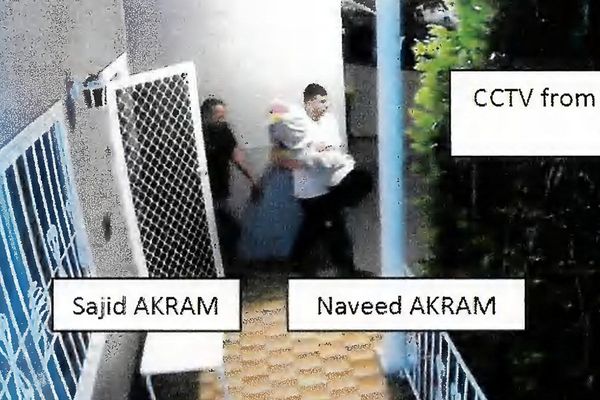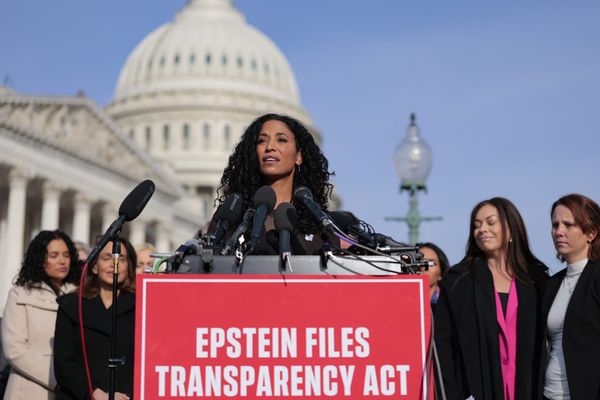Europe’s destiny will be in the hands of two, maybe three, men on Friday. Decisions taken between Vladimir Putin, Donald Trump and (perhaps) Volodymyr Zelensky will determine the future of the continent.
The outcome can only go Europe’s way if its leaders, who know this, prepare their nations for the possibility of outright war with Moscow. They need to be able to elbow the US aside, and prepare their people for the worst.
In the chaotic whirl of events around the announcement of the Putin-Trump summit in Alaska – a state the US actually bought from Russia – the terms of the meeting remain misty and mysterious.
Talks about Ukraine, without Ukraine, have been acceptable to Trump, but are not acceptable to Kyiv, or to America’s European allies.

There have been strong indications from Trump that territorial concessions will inevitably emerge from the talks with Putin. That’s why the Europeans and Ukraine want to be in the room, and why Zelensky has said “no” ahead of time. He’s also constitutionally barred from making any such concessions to the Russian invaders.
Still, there have been briefings that Zelensky may be “told” that he’ll have to give up the Donetsk, Luhansk, Kherson and Zaporizhzhia provinces – which would mean his troops falling back from the positions they hold now and giving up on cities such as Kramatorsk.
Europe’s foreign ministers went into virtual sessions for crisis talks on Monday, and over the weekend, European heads of government issued a statement setting them on a potential collision course with Trump.
“Ukraine has the freedom of choice over its own destiny,” said Keir Starmer along with the leaders of Italy, the EU, Finland, Poland and Germany. “Meaningful negotiations can only take place in the context of a ceasefire or reduction of hostilities.
“The path to peace in Ukraine cannot be decided without Ukraine. We remain committed to the principle that international borders must not be changed by force. The current line of contact should be the starting point of negotiations.”
OK – fine. Finer still is that Europe and the UK have rushed to increase defence spending, and underwritten arms sales from the US to Ukraine. They have generally understood that the US is now an unreliable ally when it comes to Russia and Ukraine, since Trump has lost no opportunity to enfeeble Kyiv and to strengthen the Kremlin’s hand.

There should be no expectation that Trump will take the side of democratic pro-Western Ukraine over the dictator Putin on Friday – and the Europeans know that. That why they’re working very hard to make sure that Zelensky is at the summit too – and that he’s reinforced with the full force of European diplomacy if he’s allowed to attend.
But it is military force that Europe needs to be able to show – not just as US taxpayer subsidies to European security are cut back by Trump, but right now.
According to an analysis by the Kiel Institute, the “production of land forces” by Europe and the UK must increase by at least 300 per cent, and probably by six times, to match current Russian military expenditure and production.
“Europe needs to shift its societal debate from fiscal numbers to actual military capabilities needed, ie, how to purchase and produce what is actually needed to be successful on the modern battlefield and how to ensure timely delivery with concrete targets for closing critical capability gaps,” the report said.
In the language of old-fashioned telegrams spoofed by Evelyn Waugh in Scoop – “Europe is unwarwise”.
It is not that politicians across the continent don’t understand this. It is that the populations they rely on to elect them don’t quite comprehend, as yet, the danger they are in.
Polling undertaken in June by the European Council on Foreign Relations found that, in a survey of European nations, less than a third (27 per cent) of 18- to 29-year-olds favoured the introduction of compulsory military service.

The most support, among those surveyed, was in France (62 per cent), Germany (53 per cent), and Poland (51 per cent). Hungary, where the government has taken a soft line on Putin, sits at 32 per cent, Spain at 37 per cent, and the UK at 37 per cent.
Frontline states like Sweden have launched public awareness campaigns on how to respond to a Russian attack. Finland has a population of just over 5.6 million (smaller than London’s). It can mobilise 280,000 trained soldiers rapidly, and is estimated to be able to field 900,000 in extremis.
Britain’s forces could muster 180,000 – at a pinch.
In June, the authors of the National Security Strategy said that Britain must prepare for a “wartime” scenario. But while the UK, alongside France, is leading the “coalition of the willing” in Europe – by increasing defence spending, and lately by reinforcing Zelensky’s position ahead of the Alaska summit – the message has not yet got through to Britons.
“The politicians have been saying all the right things – but we need a sustained campaign for the wider public to get it,” a government insider told The Independent.
That work starts this week.
Trump accused of ‘affront to justice’ over National Guard deployment in DC: Live
Ukraine war latest: EU tells Trump that Kyiv must ‘choose own destiny’
Terrifying moment Madrid homes threatened by raging wildfire
Zelensky warns Trump not to trust Putin ahead of Ukraine-Russia talks
Tourists embrace new favourite pastime as heatwave scorches Paris
Mapped: Ukrainian territory Zelensky could be “prepared to cede” under peace deal







